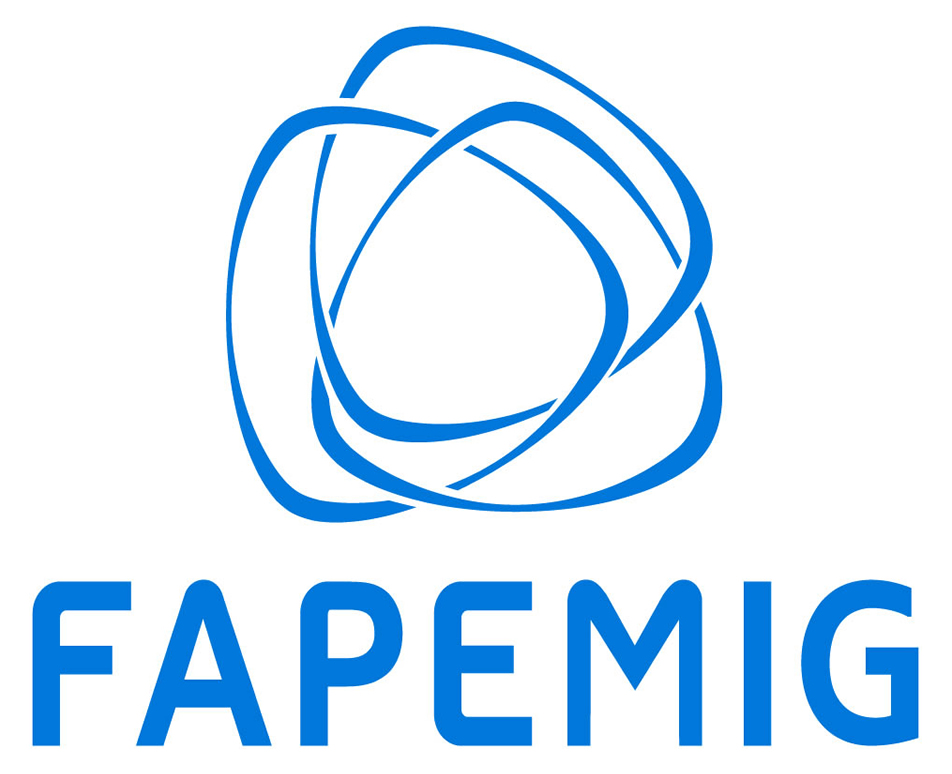Posters
| Category 'K'- Pathogen informatics' |
| Poster - K01 |
| In silico prediction of MHC classe I epitopes in L1 protein of HPV type 31 |
| paloma aparecida rocha, Federal University of Sergipe, Brazil |
| paloma santos rocha universidade federal de sergipe, Brazil fernanda oliveira prado, Federal University of Sergipe, Brazil marcus Vinicius de aragão batista, federal university of sergipe, Brazil |
| Short Abstract: The HPV31 is one of the most common types of high risk and incident in several different regions of the world. However, the available vaccines have low efficacy to it. The predicted epitopes is a key tool in the development of vaccines predicting functional epitopes for human immunization. |
| Poster - K02 |
| COMPLETE GENOME SEQUENCE OF Corynebacterium ulcerans STRAIN 210932 |
| Marcus Vinicius Viana, Universidade Federal de Minas Gerais, Brazil |
| Leandro Benevides, Universidade Federal de Minas Gerais, Brazil Diego Mariano, Universidade Federal de Minas Gerais, Brazil Flávia Rocha, Universidade Federal de Minas Gerais, Brazil Edson Folador, Universidade Federal de Minas Gerais, Brazil Felipe Pereira, Universidade Federal de Minas Gerais, Brazil Fernanda Dorella, Universidade Federal de Minas Gerais, Brazil Carlos Leal, Universidade Federal de Minas Gerais, Brazil Alex Carvalho, Universidade Federal de Minas Gerais, Brazil Artur Silva, Universidade Federal do Pará, Brazil Siomar Soares, Universidade Federal de Minas Gerais, Brazil Henrique Figueiredo, Universidade Federal de Minas Gerais, Brazil Vasco Azevedo, Universidade Federal de Minas Gerais, Brazil Luis Guimarães, Universidade Federal de Minas Gerais, Brazil |
| Short Abstract: In this work we present a whole genome sequence of Corynebacterium ulcerans strain 210932, an emergent pathogen that infect wild and domesticated animals and humans, causing diphtheria-like illness and other clinical pictures. The genomic information generated is useful for basic and wealth research as vaccinology, drug targets and epidemiology. |
| Poster - K03 |
| A multilayer network approach for guiding drug repositioning in neglected diseases |
| María Magariños, Instituto de Investigaciones Biotecnológicas, Argentina |
| Ariel Berenstein, Fundación Instituto Leloir, Argentina Ariel Chernomoretz, Universidad de Buenos Aires, Argentina Fernán Agüero, Instituto de Investigaciones Biotecnológicas, Argentina |
| Short Abstract: In this work we use a multilayer network strategy to model a map of bioactive drugs, their targets, and other informative relationships. We identified candidate drug targets, either for complete query species or for orphan compounds. Some of them were already validated and other are potentially new. |
| Poster - K04 |
| Immunoinformatics workflow to select vaccine targets against canine ehrilichiosis |
| Joao Paulo Linhares Velloso, Universidade Federal de Ouro Preto, Brazil |
| Daniela de Melo Resende, Centro de Pesquisas René Rachou, Brazil Jeronimo da Conceição Ruiz, Centro de Pesquisas René Rachou, Brazil Alexandre Barbosa Reis, Universidade Federal de Ouro Preto, Brazil |
| Short Abstract: Vaccine against ehrlichiosis would be important to disease control. Our group developed an immunoinformatics workflow. Here, predictions were made with NetCTL, NetMHC, NetMHCII, BepiPred, PSORTb, TMHMM and Sigcleave. Integration of results was made using a relational database. From 925 proteins, seven were selected and may induce protection against canine ehrlichiosis. |
| Poster - K05 |
| The Xanthomonas axonopodis pv. manihotis Pathogenesis Uncover by Metabolic Networks |
| DAVID OCTAVIO BOTERO ROZO, LOS ANDES UNIVERSITY, Colombia |
| Silvia Restrepo, Los Andes University, Colombia Andrés Gonzales, Los Andes University, Colombia Adriana Bernal, Los Andes University, Colombia |
| Short Abstract: Cassava bacterial blight produced by Xanthomonas axonopodis pv. manihotis (Xam) is the most important bacterial disease of cassava. Here we want to propose a dynamic model of the Xam metabolism using genomic data to deepen inside of the pathogenic mechanism of interaction between plant and bacterium. |
| Poster - K06 |
| In silico strategy to simulate PFGE patterns for multiple enzymes using NGS assembled bacterial genomes |
| Felipe Pereira, Aquacen/UFMG, Brazil |
| Siomar Soares, Aquacen/UFMG, Brazil Carlos Leal, Aquacen/UFMG, Brazil Vasco Azevedo, ICB, Brazil Henrique Figueiredo, Aquacen/UFMG, Brazil |
| Short Abstract: In silico strategy to simulate PFGE patterns for multiple enzymes using NGS assembled bacterial genomes. The gel simulation presented was effective in separating genomes and creating a dendogram that could group the three different species and subtypes. |
| Poster - K07 |
| Identification and cloning of new target to vaccine development against canine visceral leishmaniasis using bioinformatics |
| Rory Brito, Universidade Federal de Ouro Preto, Brazil |
| João Paulo Linhares, Universidade Federal de Ouro Preto, Brazil Antônio Rezende, Centro de Pesquisas Aggeu Magalhães, Brazil Rodrigo Corrêa-Oliveira, Centro de Pesquisas René Rachou, Brazil Jeronimo Ruiz, Centro de Pesquisas René Rachou, Brazil Alexandre Reis, Universidade Federal de Ouro Preto, Brazil Daniela Resende, Centro de Pesquisas René Rachou, Brazil |
| Short Abstract: Reverse Vaccinology is one of the most promising field using bioinformatics tools to epitope prediction for T and B cells in silico. In this work we propose a high-throughput screening of the L. infantum proteome to map potential vaccines targets that may be used against canine visceral leishmaniasis. |
| Poster - K08 |
| Genomic data mining for search of new targets for vaccine development: immunoinformatics and system biology |
| Daniela Resende, Centro de Pesquisas René Rachou, Brazil |
| Alexandre Reis, Universidade Federal de Ouro Preto, Brazil Jeronimo Ruiz, Centro de Pesquisas René Rachou, Brazil |
| Short Abstract: Immunoinformatics aims selection vaccine/diagnostic targets. Disorded portions of proteins may have relation with immunogenic epitopes. Automated workflow used algorithms for epitope and disorder prediction in a relational scheme, and it was used in Leishmania infantum and Schistosoma mansoni. Experiments are being performed to confirm the immunogenicity of selected proteins. |
| Poster - K09 |
| Computational Prediction of MHC-class I Epitopes from L1 Protein of Human Papillomavirus type 16: Search for Broad Spectrum Response |
| Fernanda Prado, Universidade Federal de Sergipe, Brazil |
| Paloma Aparecida Santos Rocha, Universidade Federal de Sergipe, Brazil Marcus Batista, Universidade Federal de Sergipe, Brazil |
| Short Abstract: The present study is intended to use robust computational epitope prediction tools to determine T-cell epitopes for L1 protein of HPV-16, which could serve to human immunization owing to the distribution and prevalence of HPV types around the world. |
| Poster - K10 |
| Computational determination of t-cell epitopes in early proteins of human papillomavirus type 31 |
| paloma santos rocha, universidade federal de sergipe, Brazil |
| Fernanda Oliveira Prado, Universidade Federal de Sergipe, Brazil Marcus Vinicius Batista de Aragão, Universidade Federal de Sergipe, Brazil |
| Short Abstract: HPV-31 is quite detected worldwide. And, current vaccines have low efficacy. Thus, it is important to develop new vaccine strategies and epitope prediction is a key part in this process. Moreover, early HPV proteins are important because they act during the progression of the lesion. |
Posters
Poster Presentation List & Schedule
Odd numbers:
Poster set up: Day 1 - all day long
Take down: Day 2 after Poster Session
Size: Up to 90cm width x 120 cm height
Even Numbers:
Poster set up: Day 2 after Poster session and Day 3 until the first coffee break
Take Down: Day 3 after Poster Session
Size: Up to 90cm width x 120 cm height
| View Posters By Category |
- A) Bioinformatics of Disease and Treatment
- B) Bioinformatic tools and databases
- C) Computational aspects
- D) Comparative Genomics
- E) Education
- F) Epigenetics
- G) Functional Genomics
- H) Genome Organization and Annotation
- I) Genetic Variation Analysis
- J) Metagenomics
- K) Pathogen informatics
- L) Population Genetics Variation and Evolution
- M) Protein Structure and Function Prediction and Analysis
- N) Proteomics
- O) Sequence Analysis
- P) Systems Biology and Networks
- Q) Other
| Search Posters: |
TOP






